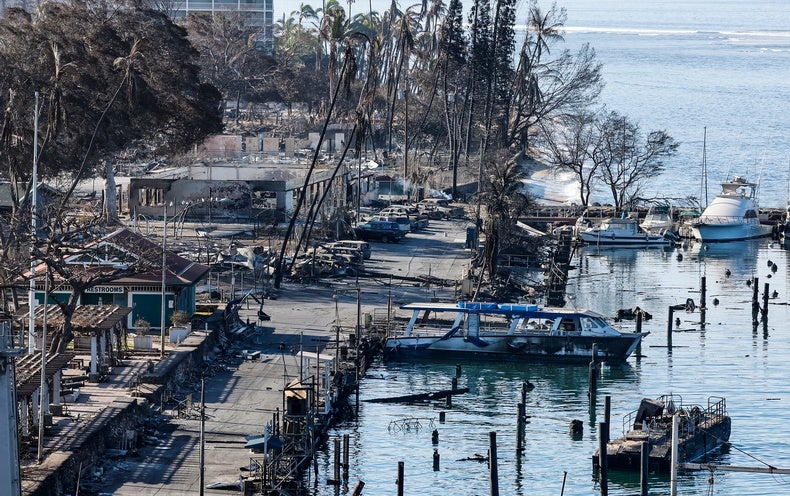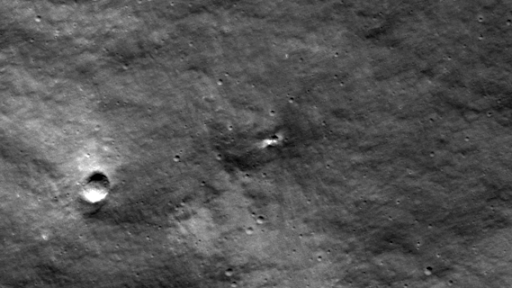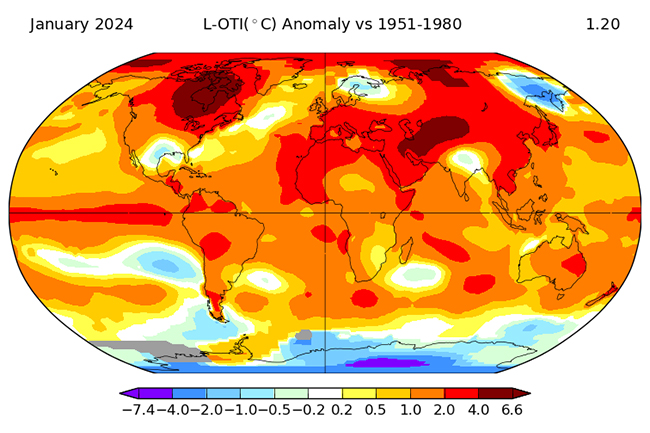As search crews wrap up the hunt for people missing after fires swept the Hawaiian island of Maui, scientists are gearing up for a challenge facing survivors: water contamination. Early indications suggest that the local water system has been compromised in places, and the sheer scale of the damage could pose unprecedented threats to Maui’s diverse coastal ecosystem.
So far, more than 100 people in Maui have been confirmed dead, making the wildfire that devastated the city of Lahaina the deadliest in modern US history. Hundreds more people are still unaccounted for. The fire damaged or destroyed an estimated 2,200 buildings, creating a toxic environment that is likely to affect water quality. The carcinogenic chemical benzene has turned up in the public water system in Lahaina, and local officials have advised residents not to drink tap water. Scientists also fear that contaminated run-off will flow onto the island’s sensitive coral reefs.
“We have had large fire events before, but this is a different beast,” says Chris Shuler, a hydrologist with the Water Resources Research Center of the University of Hawaii at Manoa, in Honolulu. “There’s no playbook for this. Everybody is just figuring it out as we go,” adds Shuler, who is based on Maui.
A fire’s toxic legacy
Working in parallel with local water officials, scientists at the University of Hawaii have already started testing for a variety of contaminants that could be released by the incineration of plastics, vehicles, household chemicals and other sources.
Initial results might not be available for several days, but there is every reason to suppose that the water system in Lahaina has been contaminated, says Andrew Whelton, an engineer at the Purdue University in West Lafayette, Indiana, who specializes in disaster response. The problem, Whelton says, is that when multiple buildings are destroyed, the water system not only loses pressure but also can develop a vacuum that pulls pollution from burnt areas into water-delivery pipes. Those pollutants can then circulate through the water system as firefighters and residents open hydrants and taps to keep the flames at bay.
“The pipes and water volumes are designed to handle one or two structure fires,” says Whelton, who spent more than a week in Maui to help coordinate relief efforts with the University of Hawaii and government agencies. “They are not designed for an entire city to burn down.”
The university is testing for benzene, formaldehyde and 86 other chemicals that are classified as volatile organic compounds. It is also checking for dozens of other contaminants. Test results from the inland community of Kula, where a second fire destroyed several hundred structures, have turned up little contamination thus far, Shuler says. But it could be several days before the university team gets its first test results from Lahaina, where the Maui County water department discovered benzene.
Whelton says contamination is likely to show up in Kula as well. Hundreds or even thousands of samples will need to be tested to fully assess the risk across the island, he says.
Reefs at risk
Scientists and government officials are already starting to think about longer-term impacts on the coral reefs, which are core to Lahaina’s economy and cultural identity. For Steve Calanog, incident commander for the US Environmental Protection Agency (EPA), that means working to prevent ashes tainted with contaminants such as asbestos, lead and arsenic from blowing into the ocean.
Now that search and recovery operations are coming to an end, the EPA is preparing to move through the burnt zone to recover hazardous materials such as household chemicals, batteries and propane canisters. The agency then plans to spray cleared areas with a biodegradable soil stabilizer that will create a temporary crust on the ash piles. The material is commonly used for dust control in construction and other industries, but its application in wildfire recovery is relatively new. Calanog says that Lahaina represents a particular challenge, presenting a complex and often hazardous mix of urban fire debris that is sitting immediately next to coral reefs.
Other researchers are already starting to think about how to monitor fires’ impacts on the ocean. Scientists will be watching for everything from algal blooms to changes in acidification — as well as long-term changes in ocean nutrients and chemistry, which could drive a shift from a coral-based reef to one that is dominated by algae, says Andrea Kealoha, an oceanographer at the University of Hawaii’s Maui campus, in Kahului.
Kealoha and her colleagues are applying for a National Science Foundation grant to investigate the ecosystem impacts. They are also hoping for a separate grant from the Federal Emergency Management Agency, so that they can monitor contaminants in fish populations to ensure that the fish are safe to eat.
But for now, Kealoha is planning to test seawater samples that she collected off the coast a little over a week after the initial fire. Days before her sampling trip, according to the captain of the boat she was on, the ocean had been covered in ash and gleaming with oily substances. When she went out, however, the water was crystal clear, suggesting that the initial wave of pollution might have been carried farther out to sea by the winds.
It will take time to gather the data and understand the impacts, she says, and people in Lahaina are already starting to ask questions. “The community wants to know about the long-term impacts to our waters and to our ecosystems,” she says. “It’s time to start addressing these questions.”
This article is reproduced with permission and was first published on August 30, 2023.














